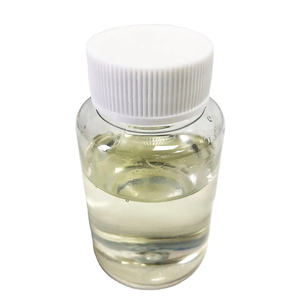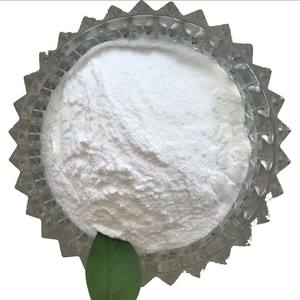Intro to Water Lowering Representatives: A Game-Changer in Concrete Modern Technology
Water lowering agents (WRAs), likewise called plasticizers, are important chemical admixtures utilized in modern concrete solution to enhance workability while decreasing water web content. By dispersing concrete particles more effectively, these agents enable the production of high-performance concrete with improved mechanical properties, durability, and sustainability. As building needs develop– needing stronger, longer-lasting, and environment-friendly materials– water reducing representatives have actually ended up being central to technology in civil engineering and framework development.
(Cabr superliasticizer)
Chemistry and Category of Water Lowering Professionals
Water minimizing representatives feature by adsorbing onto the surface of concrete bits, creating electrostatic repulsion that prevents jumble and boosts flowability. They are primarily classified into three generations based on their chemical structure and performance level: lignosulfonates (first generation), sulfonated melamine formaldehyde (SMF) and naphthalene sulfonate formaldehyde condensates (NSF) (second generation), and polycarboxylate ether (PCE)-based superplasticizers (3rd generation). Each course offers distinctive advantages in terms of dosage effectiveness, depression retention, and compatibility with different cement kinds, making them ideal for various construction scenarios.
Mechanism of Action: Just How Water Reducing Agents Boost Concrete Efficiency
The primary function of a water minimizing representative is to lower the water-to-cement (w/c) ratio without compromising workability. This decrease results in higher compressive stamina, decreased porosity, and enhanced resistance to ecological anxieties such as freeze-thaw cycles and chemical assault. WRAs accomplish this by modifying the rheological actions of the cement paste, enabling better compaction and denser microstructures. Advanced formulas, especially PCE-based ones, can be tailored at the molecular degree to enhance diffusion and hydration kinetics, better boosting early-age and lasting concrete buildings.
Industrial Applications Throughout Construction Sectors
Water minimizing representatives are vital across a wide variety of construction applications. In skyscrapers and bridges, they enable making use of self-compacting concrete (SCC), which streams easily into intricate forms without resonance. In precast and prestressed concrete components, WRAs add to faster demolding and raised production prices. Framework jobs such as passages, dams, and freeways benefit from their capacity to enhance sturdiness under severe conditions. Even in environment-friendly building campaigns, WRAs sustain the advancement of low-carbon concretes by facilitating the consolidation of extra cementitious products like fly ash and slag.
Market Trends and Technological Advancements
The global market for water lowering representatives is growing rapidly, driven by urbanization, infrastructure investments, and the demand for sustainable building and construction options. Technological improvements have actually caused the development of hybrid and multifunctional WRAs that combine water decrease with retardation, air entrainment, or thickness modification. Digital devices such as AI-driven admixture optimization and real-time tracking systems are being incorporated right into concrete manufacturing to ensure precise dosing and consistent top quality. Additionally, suppliers are focusing on improving item stability, minimizing sensitivity to varying cement chemistries, and decreasing ecological influence via greener synthesis courses.
Obstacles and Ecological Considerations
Regardless of their advantages, water reducing agents encounter challenges related to cost, compatibility, and ecological footprint. Some traditional WRAs might have hazardous results or call for energy-intensive manufacturing methods. Problems such as depression loss in time, sensitivity to temperature variations, and communications with other admixtures complicate their usage in field problems. From an environmental viewpoint, there is raising pressure to develop naturally degradable and non-toxic choices. Scientists are discovering bio-based plasticizers derived from renewable energies, aiming to lower reliance on petrochemical feedstocks and align with round economic situation concepts.
Future Prospects: Technology and Sustainability in Admixture Growth
( concrete addtives)
The future of water minimizing agents hinges on smart, lasting, and highly engineered services. Breakthroughs in nanotechnology and polymer scientific research are making it possible for the layout of next-generation WRAs with superior efficiency characteristics and marginal eco-friendly effect. Technologies such as encapsulated launch systems, reactive polymers, and carbon-negative admixtures are being examined to fulfill advancing building requirements. Furthermore, the combination of digital systems and IoT-enabled sensing units will certainly allow real-time control of admixture behavior throughout mixing and healing. As the building sector moves toward decarbonization and strength, water lowering agents will certainly play a crucial role fit the future of concrete technology.
Vendor
Cabr-Concrete is a supplier of Concrete Admixture with over 12 years of experience in nano-building energy conservation and nanotechnology development. It accepts payment via Credit Card, T/T, West Union and Paypal. TRUNNANO will ship the goods to customers overseas through FedEx, DHL, by air, or by sea. If you are looking for high quality Concrete Admixture, please feel free to contact us and send an inquiry.
Tags: superplasticizer, water reducer, water reducing agent, concrete additives
All articles and pictures are from the Internet. If there are any copyright issues, please contact us in time to delete.
Inquiry us

